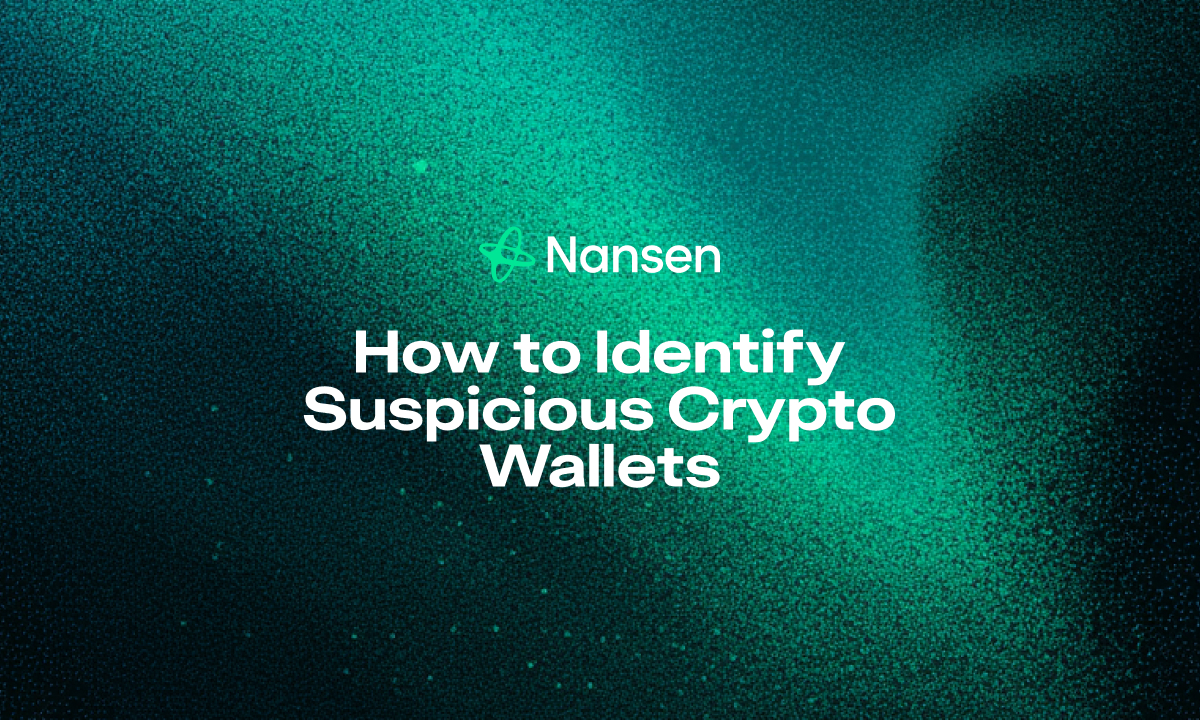Introduction: Safeguarding Crypto Investments Through Onchain Wallet Analysis
In the evolving world of digital assets, identifying suspicious crypto wallets is vital for protecting your investments and avoiding scams or illicit activities. Onchain data offers a transparent and permanent record of all blockchain transactions, allowing users to analyze wallet behaviors, detect unusual activity, and uncover potential threats. By mastering onchain analysis, investors can avoid risky wallets and make well-informed decisions to secure their assets.
Recognizing Suspicious Crypto Wallet Behavior and Red Flags
Suspicious crypto wallet behavior includes unusual transaction patterns or links that hint at potential illegal activities such as fraud, hacking, or money laundering. Detecting these behaviors early requires understanding what makes a wallet high-risk and the common onchain indicators to watch for.
Characteristics That Define a Suspicious Wallet
A wallet is flagged as suspicious when it demonstrates one or more of the following traits:
- Involvement in Scams and Fraud: Participates in rug pulls, phishing, pump-and-dumps, or fake ICO schemes.
- Receipt of Stolen Funds: Linked to hacks, smart contract exploits, or security breaches.
- Money Laundering Tactics: Uses complex layering with mixers or multiple small transactions to hide fund origins.
- Evasion of Sanctions: Associated with sanctioned individuals, entities, or jurisdictions.
- Market Manipulation Patterns: Engaged in wash trading, front-running, or sandwich attacks to distort markets.
- Funding Illicit Activities: Serves as a conduit for financing unlawful operations.
Key Transaction Patterns Indicative of Suspicious Activity
Identifiable onchain signals include:
- Rapid transfers of large sums through newly created or dormant wallets.
- Numerous small-value deposits or withdrawals across multiple addresses.
- Large inflows from unknown sources followed by quick, large outflows.
- Sudden spikes in activity after long dormancy, especially if linked to questionable fund origins.
Essential Onchain Indicators to Detect Illicit Wallet Activities
Tracking suspicious wallets effectively means recognizing specific red flags visible in onchain data.
1. Unusual Transaction Volume and Frequency
- Rapid high-volume transfers aimed at obscuring money trails.
- Frequent small transactions that may indicate dusting or layering.
- Large deposits lacking identifiable sources, quickly dispersed elsewhere.
- Reactivation of dormant wallets with significant transfers.
2. Connections to Known Illicit or Blacklisted Addresses
- Transfers to or from wallets listed on sanctions lists (e.g., OFAC).
- Receiving funds from addresses identified in prior hacks or rug pulls.
- Interaction with darknet market-associated wallets.
3. Irregular Smart Contract Interactions and Exploits
- Participation in flash loan exploits and uncollateralized borrowing.
- Granting suspicious token approvals that may precede token drains.
- Involvement in front-running or sandwich attacks manipulating transaction order.
4. Suspicious Centralized Exchange Flow Patterns
- Large deposits from unknown wallets into exchanges shortly after suspicious events.
- Swift off-chain transfers post-exploit to liquidate stolen assets.
How Onchain Analytics Platforms Enhance Suspicious Wallet Detection
Due to the complexity and volume of blockchain data, leveraging specialized tools is essential.
Cluster Analysis and Entity Attribution for Wallet Grouping
Analytics platforms combine multiple addresses controlled by the same entity into clusters, revealing the full scope of their financial activities across wallets.
- Enables tracing complex money flows beyond individual addresses.
- Facilitates detection of laundering activities spanning numerous wallets.
Address Labeling, Risk Scoring, and Blacklist Integration
Many platforms maintain comprehensive databases of labeled wallets connected to scams, exchanges, or institutional entities.
- Provides instant risk scores based on interactions with flagged wallets.
- Helps users prioritize investigation or avoidance without manual research.
Visual Flow Mapping and Transaction Path Tracking
Graphical representations of fund movements expose intricate transaction networks indicative of layering or illicit transfers.
- Identifies intermediary wallets and final fund destinations.
- Simplifies detection of laundering chains or scam fund dispersal.
Real-time Notifications and Continuous Monitoring
Users can configure alerts for:
- Large transfers involving monitored wallets.
- Engagements with blacklisted or suspicious addresses.
- Abrupt changes in wallet behavior or balances.
This proactive approach allows rapid response to emerging threats.
Frequently Asked Questions
How can I verify if a crypto wallet is legitimate?
Check the wallet’s transaction history for consistent activity with reputable exchanges, audited DeFi protocols, or well-known entities. Use onchain analytics tools to detect any links to blacklisted addresses or clusters exhibiting suspicious patterns.
Can onchain data help recover stolen crypto?
While onchain data cannot directly retrieve stolen funds, it is crucial for tracking stolen assets’ paths. Law enforcement and blockchain forensic experts utilize this data to collaborate with exchanges for possible fund freezes or legal action.
What is a crypto wallet profiler?
A crypto wallet profiler is an analytic tool that offers detailed insights into a wallet’s history—covering transaction records, token holdings, smart contract interactions, affiliations, and risk scores—helping users to assess legitimacy and detect suspicious behavior.
Conclusion: Empower Your Crypto Security with Onchain Wallet Analysis
Understanding how to identify suspicious crypto wallets through onchain data is essential for anyone serious about secure cryptocurrency investing. By recognizing transaction anomalies, associations with illicit entities, and smart contract abnormalities, investors can avoid potential pitfalls. Leveraging powerful onchain analytics solutions like Nansen enables comprehensive monitoring, risk assessment, and real-time alerts—turning complex blockchain data into actionable intelligence. Start exploring Nansen today to protect your investments with cutting-edge onchain insights.




